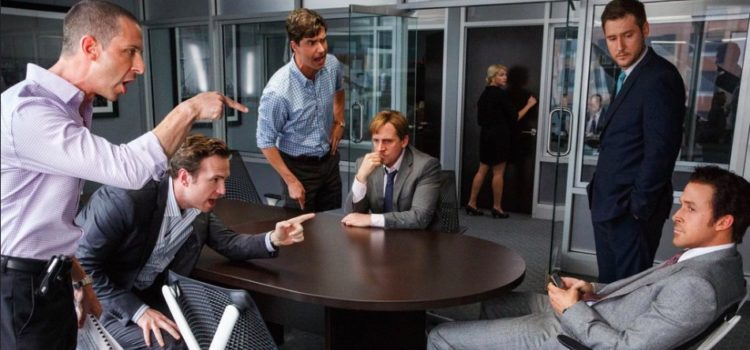
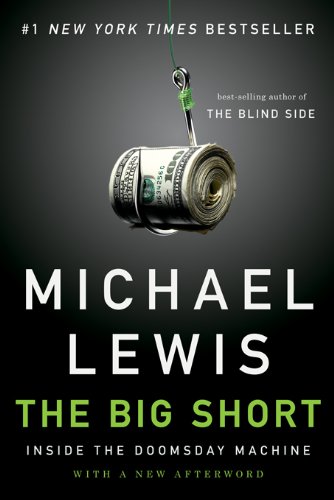
This article is an excerpt from the Shortform summary of "The Big Short" by Michael Lewis. Shortform has the world's best summaries of books you should be reading.
Like this article? Sign up for a free trial here .
Are the characters in the film The Big Short based on real people? Which characters?
We’ll cover the main players in The Big Short that are based on real people. Learn why the real people who shorted the housing market are just as compelling as the characters based on them.
The Big Short’s Real People
Mark Baum (Steve Carell)
The character of Mark Baum is based on Steve Eisman. Steve Eisman is an investor best known for having shorted the housing market and profiting from the 2007-2008 financial crisis.
Steve Eisman made a name for himself on Wall Street. Originally an attorney, he switched gears relatively early in his career to become an analyst at Oppenheimer, a financial advisement firm.
Steve Eisman rapidly developed a reputation as a brash truth-teller, unwilling to offer up the praise and platitudes that so many financial and banking leaders expected to hear. Wall Street, he saw, was awash in flattery, in which brokers, analysts, and customers told the financial class what it wanted to hear, even when it wasn’t true. Steve Eisman tended to buck conventional wisdom. He was unafraid of telling the truth about the underwhelming performances of the companies he was tasked with analyzing—and telling it loudly.
On one occasion, Steve Eisman delivered a speech at a luncheon in which he lambasted the head of a major U.S. brokerage house (who happened to be in the audience), claiming that this man knew nothing about the business he led. Another time, Eisman crumpled up the financial statements of a Japanese real estate firm and told the CEO that they were “toilet paper.” With his often-unkempt appearance and unrestrained personality, he cut a unique figure among the smartly dressed and cautiously reserved Wall Street set.
But he was also guided by a strong moral compass and began to realize just how much of Wall Street’s business model was based on deceiving the clients whose interests it supposedly existed to serve while gouging working-class Americans out of their homes and savings. He saw these injustices even more acutely after his infant son, Max, passed away in a tragic accident (in the film, it’s the character’s brother who passes away). He saw that bad things could happen to anyone, anywhere, without any warning. This new ability to imagine a worst-case scenario amid a culture of unbridled (and ultimately, unfounded) optimism was to serve Steve Eisman well as the financial sector began to lose all sense of rationality during the 2000s.
Eisman saw that the market did not punish bad actors. The incentives had not worked the way they were supposed to. His political views began to shift too, as he started his transformation from a free-market, Reaganite Republican to a progressive, populist, almost socialist Democrat. He now saw the true ethos of the system: “Fuck the poor.”
In early 2006, Deutsche employee Greg Lippmann went to Steve Eisman’s office with a proposal to bet against the subprime mortgage market. Despite his skepticism, Steve Eisman did the trade with Lippmann. The logic was sound. It was spending $2 million to make $100 million.
(Shortform note: Steve Eisman’s fund, FrontPoint, is believed to have more than doubled in value from $700 million to $1.5 billion through its bet against the housing market.)
Michael Burry (Christian Bale)
The character Michael Burry is based on the real Michael Burry. Dr. Michael Burry is a medical doctor by training and an investor and hedge fund manager who predicted and profited from the 2008 subprime mortgage crisis.
Dr. Michael Burry was, along with Steve Eisman, skeptical (to say the least) about the confidence with which Wall Street sold mortgage-backed securities. Burry was another outsider to finance, who’d come to Wall Street with an unconventional background and unique life story.
He had lost his eye at the age of two, when it was removed during surgery for a rare form of cancer. Dr. Michael Burry wore a glass eye to replace the one he’d lost. Burry later would observe that this caused him to see the world differently, both literally and figuratively. Perhaps out of self-consciousness, he had trouble with interpersonal relations and thought of himself as something of a loner. To compensate for his social struggles (he would learn much later in life that he suffered from Asberger’s syndrome, a disorder on the autism spectrum), he learned to analyze data with a rigorous eye to detail, seeing patterns that no one else could see.
Michael Burry was a medical doctor by training, who discovered a knack for investing and stock-picking when he was in medical school in the 1990s after studying the teachings of the legendary investor Warren Buffett. In his spare time (which, as a medical student, was rare) he started a blog on value investing that quickly became a favorite among traders and investment bankers—all of whom were amazed by his aptitude as a newcomer to investing and by the fact that he was doing this while attending medical school. As a value investor, Dr. Michael Burry specialized in identifying companies that could be acquired for less than their liquidation value—that is, finding companies that the market was undervaluing. This form of investing was a natural fit for the analytical and unconventional Burry, who saw things that others could not.
The success of his blog established Dr. Michael Burry as an acknowledged authority on value investing. Eventually, he quit medical school to pursue a career in finance. Joel Greenblatt of Gotham Capital offered Burry a million dollars to start his own fund, Scion Capital.
But what made Dr. Michael Burry so successful? How was he able to consistently beat the market by such wide margins? It turns out, he wasn’t really doing anything special. There was no insider trading. He didn’t have secret information or special technology that anyone else on Wall Street didn’t have access to.
He was doing nothing more than buying stocks and analyzing companies’ financial statements. But simply analyzing statements set him apart. No one else was bothering to do the hard, tedious work of actually studying up on the companies they were investing in.
Dr. Michael Burry saw a rare opportunity in the subprime housing bond market, once again where no one else was looking. But this was a twist on his usual approach. Instead of looking for assets that were undervalued, he was going to target the subprime market because of his conviction that it was extraordinarily overvalued. He was going to short the housing market.
Dr. Michael Burry cashed in his chips on August 31. His profits were over $720 million.
Jared Vennett (Ryan Gosling)
The character of Jared Vennett is based on real person Greg Lippmann. Greg Lippmann is a hedge fund manager and the former head of asset-backed securities trading at Deutsche Bank.
By February 2006, many of the savviest players on Wall Street had their eyes on Dr. Burry’s big bet against the housing market. Other traders were curious why Scion Capital, Burry’s fund, had taken such a dramatic short position against mortgage securities and why Goldman Sachs, in particular, had been so eager to sell him the credit default swaps. What did he know that everyone else didn’t? Greg Lippmann, the head subprime mortgage bond trader at Deutsche Bank, wanted in on the action.
Greg Lippmann was a bond trader with a reputation for being bombastic, crass, and nakedly self-interested. He was known for humble-bragging about how much money he made from his annual bonuses and loudly complaining that he wasn’t being paid enough. Even within the money-obsessed culture of Wall Street, this was beyond-the-pale behavior. Everybody was greedy, but you weren’t supposed to be so transparently greedy.
Although his nominal employer was Deutsche Bank, everyone who met Greg Lippmann saw that he had zero loyalty to the bank or its leadership—he was in it purely for himself. This was also something he refused to disguise about himself, openly remarking, “I don’t have any particular allegiance to Deutsche Bank, I just work here.” But his own comically obvious self-interest also made him a keen observer of everyone else’s selfishness and greed. He saw through the phoniness of Wall Street decorum and noticed that everyone was exactly like him.
In early 2006, Greg Lippmann went to Steve Eisman’s office with a proposal to bet against the subprime mortgage market. (Lippmann didn’t have the funds to execute the scheme on his own.) Of course, he had simply copied Dr. Michael Burry’s idea, but he presented it to Eisman as his own original strategy. Greg Lippmann told Eisman that the underlying loans in the bonds would start to go bad even if housing prices didn’t fall—all they needed to do was stop rising.
Eventually, Greg Lippmann’s “Big Short” scheme had other partners. They all made millions (Eisman reportedly made billions) when the housing bubble collapsed in 2007 and 2008.
Jamie Shipley and Charlie Geller
The characters of Jamie Shipley and Charlie Geller are based on Jamie Mai and Charlie Ledley. Charlie Ledley and Jamie Mai are the founders of Cornwall Capital, a New York City investment corporation.
Two young, obscure start-up investors, however, heeded Lippmann’s call and saw the opportunity of a lifetime staring them in the face. Charlie Ledley and Jamie Mai had established their (admittedly short) financial careers by betting big on events that Wall Street seemed certain wouldn‘t happen. Profiting off the impending collapse of the subprime market fit perfectly into their theory of how the financial world worked.
Charlie Ledley and Jamie Mai weren’t career Wall Street guys. They barely had careers at all. Starting their fledgling money management fund, Cornwall Capital Management, with just $110,000 in a Schwab account, they were the sort of bit players that couldn’t even get a phone call returned at Goldman or Merrill. Charlie Ledley and Jamie Mai were scrappers, a “garage band hedge fund.” In fact, they literally started out of a backyard shed in Berkeley, California.
But they had a theory about financial markets that proved to be all too prescient—and that would give them a powerful advantage as the subprime market spun itself into a more and more complex web. Their insight was that investors only understood their own particular slice of the market, whether it was Japanese government bonds or European mid-cap healthcare debt. Everyone was looking at the small picture, the micro. Cornwall’s strategy was to go macro and look at the big picture. With information so unevenly distributed, there had to be pricing mistakes—assets that were priced for far more or far less than they were actually worth, simply because investors didn’t understand what they were actually buying and selling. And that inefficient pricing mechanism could mean big money for the investors who did understand and bought at the right time.
By early 2006, Cornwall had $30 million in the bank. But Charlie Ledley and Jamie Mai were still small potatoes by Wall Street standards. They might have been high-net worth individuals, but they weren’t institutional investors—they weren’t managing other people’s money, just their own. On Wall Street, they were still second-class citizens. This wasn’t just about recognition or social prestige. Their lowly status denied them the right to trade in the highly complex options—like credit default swaps—being sold through the quantitative trading desks at the big investment banks. There was major money to be made, but Cornwall was locked out of the opportunity. But when they hired Ben Hockett, doors began to open.
Charlie Ledley and Jamie Mai took a slightly different shorting position than did Eisman, Burry, Lippmann, and others. Instead of betting against the lowest tranches of the CDOs, they purchased credit default swaps that enabled them to bet against the highest tranches. Why would they do this? Because they saw that the triple-A bonds were just as vulnerable to collapse as the triple-B bonds, but the swaps against them weren’t priced that way.
In the end, Cornwall’s swaps costing about $1 million sold for $80 million by the close of business that day. Their long shot had paid off 80:1.
Ben Rickert (Brad Pitt)
The character of Ben Rickert is based on real person Ben Hockett. Ben Hockett is a former Deutsche Bank trader who left Wall Street behind to trade derivatives from his home in Berkeley Hills. In 2006 he worked with investment company Cornwall Capital to short the housing market and profit from the 2007-2008 subprime mortgage crisis.
Ben Hockett, a former Deutsche Bank trader, had left Wall Street behind to trade derivatives from the comfort of his home in Berkeley Hills. He wanted to be closer to his family and away from the wild culture of the financial world. He had an apocalyptic streak and was hyper-attuned to the possibility of extreme events. After learning that his house was wildly overpriced and lay on a geological fault line, he immediately sold it and moved into a rental—fearing that he would be hit with the unlikely combination of a housing bubble bursting and an earthquake. This was how Ben Hockett thought about the world. His home is apparently inaccessible to cars.
But for all his eccentricity as both a trader and an individual, Ben Hockett was a respected figure at the major banks. And he knew the right people to get Cornwall’s foot in the door. With a few well-placed phone calls and some meetings, Hockett got Cornwall its ISDA (International Swaps and Derivatives Association) Master Agreement, giving them the right to buy credit default swaps from the likes of Greg Lippmann. They now had a seat at the adult’s table.
On August 6, 2007, at a pub in the south of England (where he was on vacation with his family), Ben Hockett logged onto his laptop and looked for buyers on $205 million in swaps on double-A tranches of subprime mortgage CDOs. UBS, Merrill Lynch, and soon-to-be-bankrupt Lehman Brothers fiercely competed with one another to buy what Hockett had to sell (worth $80 million by the close of business that day).
Mr. Chau (Byron Mann)
The character of Mr. Chau is based on real person Wing Chau. Wing Chau is an investment advisor and bond manager.
Lippmann had Eisman meet a CDO manager named Wing Chau. Eisman hadn’t even known that there was such a thing as a CDO manager (because what was there to manage?), but here was one in the flesh. Wing Chau was a middleman whose job was essentially just to take triple-B tranches of original CDOs (again, themselves composed of subprime mortgage bonds) and repackage them into new towers of bonds. He would then pass them off to unwitting investors like pension funds and insurance companies. And by buying more and more mortgages to immediately repackage and resell, CDO managers like Wing Chau directly contributed to the demand for these bonds and the subprime mortgages of which they were composed. It was like a machine that nobody knew how to turn off.
And, to Eisman’s disgust, Wing Chau was paid obscenely for doing nothing more than shuffling around stacks of useless debt. He received a 0.01 percent fee off the top of the total CDO portfolio he managed, before any of the investors he theoretically served got paid anything. This, of course, gave the CDO manager every incentive to grow the pile of CDOs as large as he or she could, no questions asked about the quality of the underlying loans. And 0.01 percent was a lot when you were talking about billions of dollars. In just one year, a CDO manager like Wing Chau could take home $26 million.
Lippmann knew that a figure like Wing Chau embodied everything that Eisman hated about Wall Street. He was arrogant, mediocre, wildly overcompensated, and had his clients’ worst interests at heart. He was a living representation of the dumb wealth that Eisman found so appalling. Meeting Chau was just the sort of boost that Steve Eisman needed to continue shorting the subprime market. Not only did Eisman stand to make lots of money, but he would do so at the expense of the Wing Chaus of the world. That was a powerful enough motivation all by itself.
———End of Preview———

Like what you just read? Read the rest of the world's best summary of "The Big Short" at Shortform . Learn the book's critical concepts in 20 minutes or less .
Here's what you'll find in our full The Big Short summary :
- How the world's biggest banks contributed to the 2008 financial crisis, greedily and stupidly
- How a group of contrarian traders foresaw the bubble popping, and made millions from their bets
- What we learned from the 2008 crisis - if anything

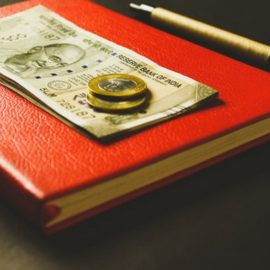


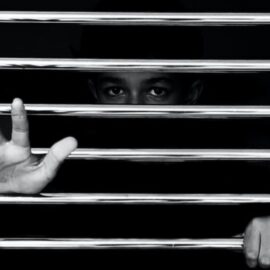

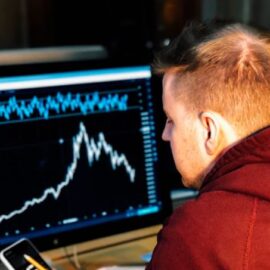
Hi Amanda,
Do you have any clue who the real life person is that was the big investor at Scion Capital in the movie? His name was Lawrence Fields in the movie played by the actor Tracy Letts. Is he a fictional character? I’ve tried searching but I’ve never seen any reference to who he was. It would be nice to finally have closure regarding this if you know :]